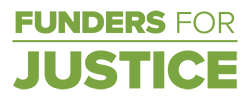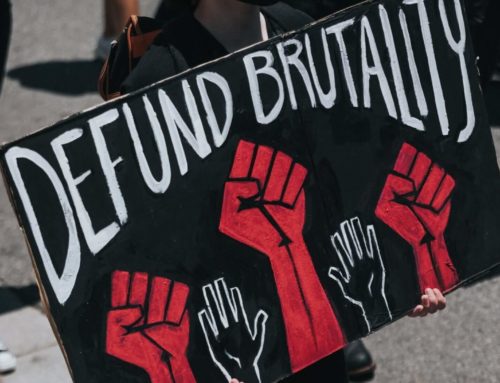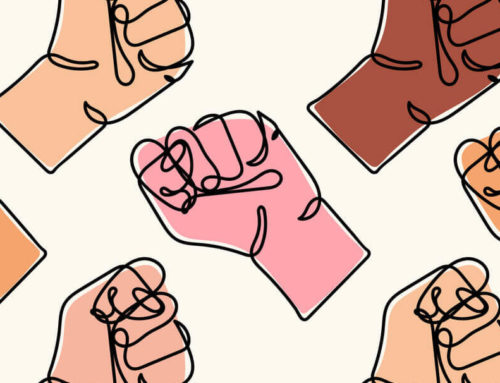By Gordon Whitman, Deputy Director, PICO National Network
If my son – who is 14 years old, has Autism and is hearing impaired – were African-American I would be worried every time he left the house to walk to school or the library, worried that he’d have a failed encounter with a teacher, school administrator or police officer that would result in him being hurt, psychologically or physically.
That anxiety – which I know many parents of African-American and Latino children have – is by no means irrational. Whites bring a host of unthinking stereotypes into their encounters with African-Americans, including over-estimating the age of African-American boys by as much as 4-5 years, according to path breaking research on racial bias.
Dr. Phillip Atiba Goff and his colleagues have tested police officers for their tendency to not only mistakenly see African-American youngsters as adults, but to also implicitly associate them with animals – a sad but common psychological tendency for White people (note Officer Darren Wilson’s description of Michael Brown as a “demon”). Researchers found that officers who show a greater tendency to dehumanize African-Americans in widely used psychological questionnaires, are more likely to have used force (defined as “takedown or wrist lock; kicking or punching; striking with a blunt object; using a police dog, restraints or hobbling; or using tear gas, electric shock or killing”) against a black child in custody than officers who did not dehumanize blacks.
What is important about these findings is that they focus on implicit – unthinking – bias rather than the racist animus that people tend to associate with racism. Implicit bias influences the snap judgments people make without stopping and thinking. It is often more dangerous than explicitly racist behavior. For example, in simulations of potential threat situations, White police officers who were not trained specifically to understand and adjust for implicit bias, were more likely to make split-second decisions to shoot African-Americans who are unarmed than Whites holding guns.
The consequences of implicit bias are devastating. Young African-American males are 21 times more likely to be killed by police than young White men. Twenty-one times!
The young people who have sustained three months of protests in St. Louis County against the killing of Michael Brown have given the country a great gift by focusing our collective attention on this epidemic. Protests against police abuse are spreading across the country. Police killings that would have been ignored six months ago are ending up on the front page of newspapers.
We are at a watershed moment in the battle against racial profiling. We have much to do to achieve racial equity and healing in America – a long agenda of changes in our economy, schools and political system – but we have the power now to end the epidemic of police killings of people of color. We know how to systematically reduce implicit bias in police departments and to break the link between stereotypes held by police officers, and use of excessive force against African-Americans and Latinos. Indeed, there are police departments that have sharply reduced officer-involved shootings by using research-based practices.
Here are five things that President Obama could do right now to end the epidemic in 2015 and create a level of security and peace of mind for young people and their families.
1. Mandatory reporting
The Department of Justice collects reams of data from local law enforcement agencies, but does not require that they submit data on incidents where police officers shoot people. Of the 17,000 police departments in the country, only 750 self-report data to the federal government. Step number one in ending the epidemic is for President Obama to require all law enforcement agencies to report on police shootings. That in turn will help the Department of Justice and the public determine which police departments have the greatest problems.
2. Withholding federal funding from police departments with poor records
The President should issue an executive order requiring that Department of Justice and the Department of Homeland Security withhold federal funding from local police departments that either do not report data on police shootings, have high rates of excessive force or engage in racial profiling. The Federal Government provides billions of dollars in funding and equipment to local police departments. It should condition this support on their willingness to train and hold officers accountable for not engaging in racial profiling.
3. Body cameras
Michael Brown’s family has called for all police officers in America to be equipped with body-worn video cameras. Research shows that these cameras have a dramatic impact on reducing use of force by police officers and civilian complaints against officers. One study found a 50 percent reduction in use of force and a 90 percent reduction in citizen complaints.
4. Training in Implicit Bias
The Center for Policing Equity and other organizations work with police departments to reduce the impact of bias on policing. It turns out that implicit bias can be tamped down or even eliminated if we are willing to take it seriously. When people are made to be conscious of how implicit bias influences their behavior, and when they take the time to build relationships with people who are of different races, they become less biased. We should make training in implicit bias and policing a mandatory requirement for all police departments.
5. Ceasefire violence prevention
As we work to reduce police use of excessive force and killings, we also need to make sure that police departments are using best practices to reduce all gun violence in communities. As with excessive use of force by police, we have ample evidence that police departments can bring down rates of gun violence throughout a community, by applying research-based practices.
For example, the Boston Ceasefire program has had a significant impact on reducing gun violence in cities across the U.S. This program focuses policing on the small number of people in a community responsible for most of the violence, gives them a choice of getting off the street and into jobs, and engages clergy and other community leaders in establishing norms against violence through night walks and trained anti-violence street workers.
Ultimately, we know what to do. Whether we act is a moral test of the value we place on Black lives.


